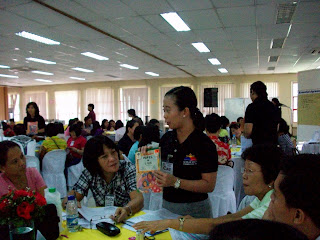Automating the library operations poses numerous challenges for the typical school library. Regardless of the collection’s volume and the school’s population there are requirements and preliminary tasks to undertake before jumping in the library automation bandwagon. These would include the following: 1) library needs assessment; 2) administrative support; 3) confirmation of a working budget; 4) stable and robust IT infrastructure; and 5) competitive manpower. Except for the first, all four must be in place, if not, at least existing in the school system. The library needs assessment can cover other features lacking in the four areas. This way, recommendations for addition budget or manpower, software requirements and blessings from the administration can be included.
Library Needs Assessment
Assessing the needs for a library automation project in a school would mean identifying existing structures of operations and services. Interviews may be done as well as consultation meetings. Defining the library workflow and current problems encountered by library users and the library staff who provide services is a good starting point to contextualize library automation in the school community. A review of the library’s role and goals is essential as library automation implicates changes in systems, work skills and paradigms. Developing a library automation project may begin in a variety of approaches and may be followed through by different strategic plans. One way is to begin from the ground up, thus the important role of a library needs assessment. Then again, top-level management may take the lead in an institutionalized approach. Either way, the status of the library must be assessed in preparation for automation.
Library automation is a huge and challenging project but with careful planning it is an endeavor worth all the time and effort.
Some essential questions to consider when assessing the needs of the library (Kreger 2010):
• How does automating your library help educate and inform the public?
• How does library automation fit into your overall technology plan?
• How does library automation fit into your technology budget?
Kreger further enumerates the following areas when assessing library needs for an automation project: demographic statistics; environmental considerations; collection assessment; budget assessment and equipment assessment.
a. Demographic statistics – This would include the population of the school namely, teachers, staff, students, parents and alumni.
b. Environmental constraints – Refers to the physical conditions of the library and its capability to accommodate new hardware requirements: cables, servers, computers, etc.
c. Collection assessment – The volumes and titles of the library collection must be assessed to see how many materials are for conversion and automation. Records of acquired titles (print, serials, online and AV) for the past three-five years are important data to have on hand. Since encoding and conversion per title and volume is costly, a decision must be made as to what to keep and weed out.
d. Budget assessment – There is an existing library budget in a school year and if budget for a library automation project is included, well and good. Vendors of library information systems software can provide quotations that can be used as basis for budget proposals. Library information system that uses open source is an option too. While the system may be free, there are operational costs as well. Besides, other peripherals for library automation like bar code, scanner, printer and supporting software must be bought. This is just the start since library automation must be sustained. Funding may be a problem if the school could not raise library fees or pool sources for the project. Grants are available, however, so it is critical to plan long term.
e. Equipment assessment – Since library automation is technology driven, availability and purchase of hardware, site preparations and network infrastructure is basic to the project.
Other areas to look into would be the specific number of holdings the library has per division; circulation information and readers’ profile; selection and acquisition cycle; conversion and operation costs. In library automation, it is best to see the big picture. Once the results of the assessment are generated, deciding which software or system to purchase is the next step.



















